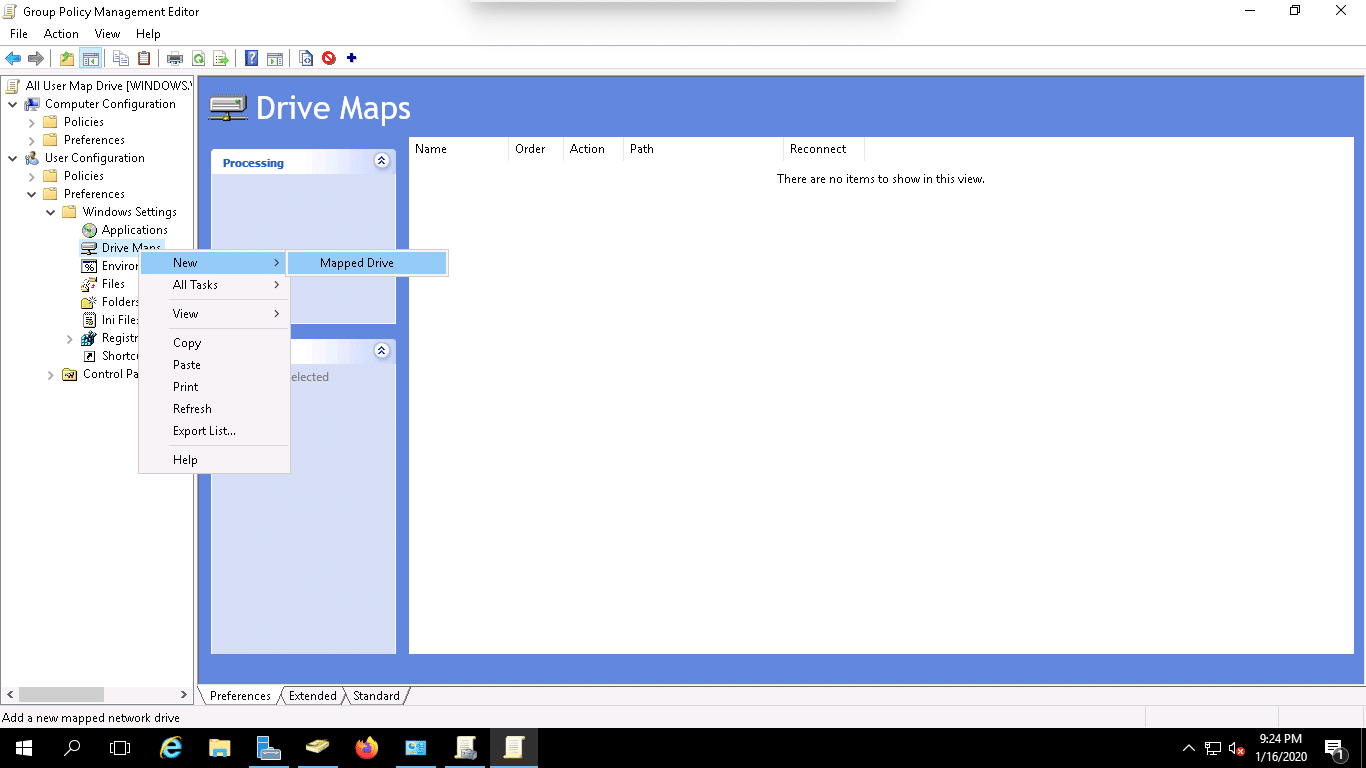

"EnableLinkedConnections"=dword:00000001įor your convenience, you can download it here: policies.
#MAPPED DRIVES IN REGISTRY WINDOWS#
Inspecting the Windows Registry Discovering Mapped Network Drives. It's contents are: Windows Registry Editor Version 5.00 It is easy and fast to find the names of the drives connected to the local computer. You can download and run this REG file to implement it. The EnableLinkedConnections value needs to be set to 1 under HKEY_LOCAL_MACHINE\SOFTWARE\Microsoft\Windows\CurrentVersion\Policies\System The following information presumes you know and are allowed to make Windows registry changes. Point to New, and then click DWORD Value.

Changing the Registry for EnableLinkedConnections Click Start, type regedit in the Start programs and files box, and then press ENTER.

Under HKEYLOCALMACHINESOFTWAREMicrosoftWindowsCurrentVersionPoliciesSystem change the. Click on View tab -> Show -> Hidden Items. Open the Windows Registry Editor (Start Run regedit). To show them normally, please refer to the following step. When User Account Control (UAC) is enabled, if you run a program as Administrator (elevated), you cant see network drives unless a registry setting is. Note the network drives are in the context of the user so you need administrator cmd prompt for administrator ones and normal user cmd prompt for normal user ones. If your Windows 11 mapped drive not showing all folders/files, the reason may be that the folders/files are hidden on the NAS drives, including mapped network drive and network drive. Alternatively, you can login as Administrator and remap the drives. You could try net use /delete Z: or net use computernamesharename /delete. Notwithstanding how ridiculous it is that running as Administrator gives you fewer permissions than other users and prevents you from seeing the mapped drives, the solution is a simple change to the registry. This is because the mapped drives were created under a login different from the administrator login. When User Account Control (UAC) is enabled, if you run a problem a program as Administrator (elevated), you can't see network drives unless a registry setting is changed to allow it. The above command will map the shared folder to Z: and you can then access the network drive in File Explorer.Network Mapped Drives are Not Available: Need to EnableLinkedConnections Problemįrom a Windows application, you try to browse to a folder or file on a network mapped drive and the drive can't be selected.Net use z: \\remote_ip\shared_folder /persistent:yes Replace “ remote_ip” and “ shared_folder” with the IP address of your network computer and the name of the shared folder. Type the following command and press Enter. Open up a regular Command Prompt (NOT in admin/elevated mode).If the mapped network drives are not available, try to use the standard Command Prompt to map a network drive. Method 2: Map a network drive with normal Command Prompt After restarting the computer, network drives created by elevated apps will be visible in File Explorer, and elevated apps can also access the network drives created by programs running with standard rights.In the Value data field, enter 1 and click OK. Locate HKEYLOCALMACHINE/SOFTWARE/Microsoft/Windows/CurrentVersion/Policies/System 3.



 0 kommentar(er)
0 kommentar(er)
